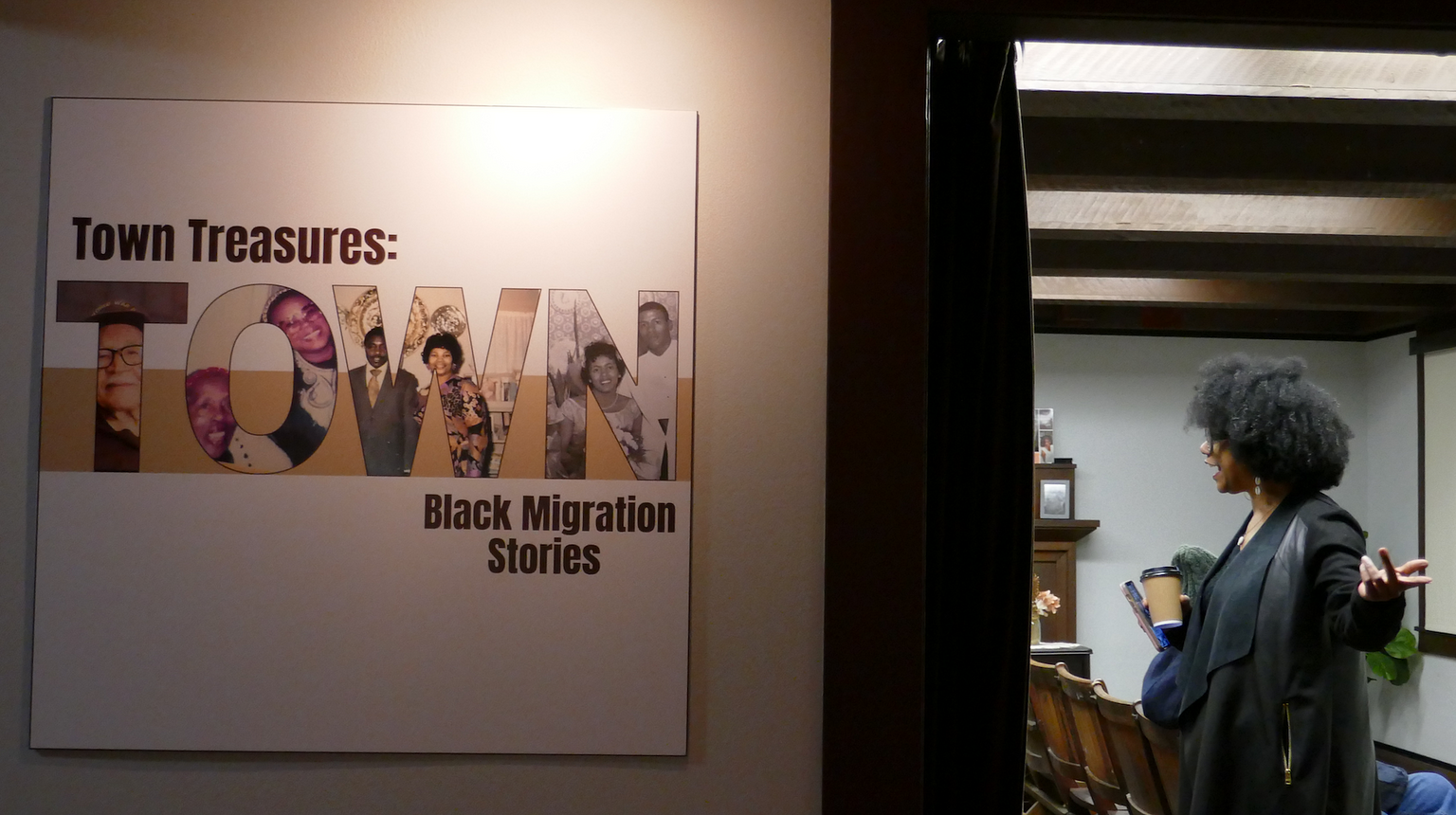Town Treasures: Black Migration Stories
Camron-Stanford House
Oakland
Feb. 16, 2024
Even if you regularly walk along Lake Merritt in Oakland, you might not notice the Camron-Stanford House, the stately old Victorian sitting on the southwestern shore. Somehow, it never caught my eye. At sunset on Friday, I overheard a couple strolling past the house as one struggled to place its history (“That’s an old landmark or something”).
It’s actually a former home built in 1876 by Samuel Merritt and owned by a succession of wealthy Victorian families, before it was bought by the City of Oakland and served as the original Oakland Museum until 1965. Now it’s a historical landmark open to the public, offering tours, events, and exhibits, which was why I found myself roaming its Victorian rooms upstairs, and attending the opening reception for its latest exhibit downstairs, “Town Treasures: Black Migration Stories.”

I arrived early to catch a tour of the upper rooms. The main floor recreates the parlor and sitting room as you might find in the 1880s — commissioned portraits of the wealthy families who owned it (they made their wealth as mercantile sellers and landowners), period furniture, and displays of traditional dresses worn during the period. The veranda overlooking the gardens and Lake Merritt was serene and lovely. I imagined myself living in the splendor and richness of what it might have been like in the late 19th century.
Downstairs, there was another kind of Oakland history. I joined a packed crowd of guests in the smaller rooms holding the “Black Migration Stories” exhibit. Cultural curator and Oakland native Patanisha Williams worked with the Camron-Stanford House to showcase stories from the “Black Gold Storytellers” project, which chronicles stories of African Americans who migrated to Oakland from the South. It was founded by Dr. Adrienne Oliver, who attended the event, along with some of the project’s writers and subjects.
“It overjoyed my heart to see this exhibit” showcasing the ‘Black Gold Storytellers’ project, said Dr. Oliver. “I was inspired by Isabel Wilkerson’s book, The Warmth of Other Suns, but I wanted to cover lesser-known stories.” Wilkerson’s seminal, best-selling work is an engrossing tapestry of narratives that covers the Great Migration of African Americans out of the South and into other parts of the country from the 1910s to the 1970s.
With the focus on those who migrated to Oakland from the South, the exhibit is small but mighty. Posters on the wall show some of the elders who participated in the project, along with a QR code leading to each one’s personal stories. In another room, guests watched video interviews with some of the subjects.
These stories were thoughtful and nuanced, revealing the harsh conditions in the South that led to the migration (traumatic racism, segregationist laws, economic hardships), the challenges facing them in their new homes, and, sometimes, the disillusionment that some felt, prompting a desire to return to the South.
I read about Bay Area activist and educator Oscar Wright, who shared how he’d help his family pick cotton as a child in Mississippi, eventually landing in California and building his own home in Northwest Oakland. Oakland gallery owner Joyce Gordon, who moved with her family to the Bay Area from Louisiana, originally went into cosmetology before deciding to open an art gallery in downtown Oakland to support Black artists. Former NFL player Allen Goodlow, whose daughter told his story, came with his family as a child from Louisiana. He’d never seen Latino or Asian people before immigrating to Oakland. Eventually, he chose to give up a lucrative career in the NFL to help raise his daughter there.
In the basement rooms of this former home to wealthy white landowners and entrepreneurs, the stories of African Americans reckoning with their unique challenges in the same city stood in stark contrast to those who once lived upstairs. But the reception and rooms vibrated with happiness and gratitude and resilience, as some of the storytellers and subjects of the exhibit wandered the room, with friends and family paying their respects. Walking away from the lake towards downtown, spotting the Oakland Tribune building in the distance, I was struck with the richness of everyone who lived, struggled, and flourished in the Town.







